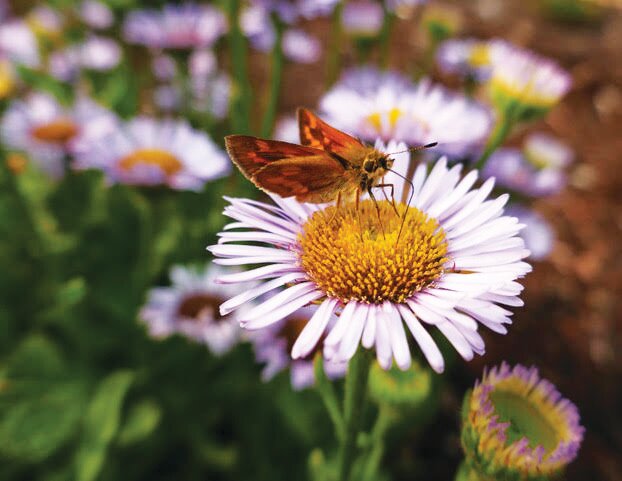April is Native Plant Appreciation Month in the state of Washington — home to more than 3,000 native plant species.
“It’s a time to celebrate Washington’s native …
This item is available in full to subscribers.
We have recently launched a new and improved website. To continue reading, you will need to either log into your subscriber account, or purchase a new subscription.
If you had an active account on our previous website, then you have an account here. Simply reset your password to regain access to your account.
If you did not have an account on our previous website, but are a current print subscriber, click here to set up your website account.
Otherwise, click here to view your options for subscribing.
* Having trouble? Call our circulation department at 360-385-2900, or email our support.
Please log in to continue |
|

April is Native Plant Appreciation Month in the state of Washington — home to more than 3,000 native plant species.
“It’s a time to celebrate Washington’s native floral abundance, its amazing biodiversity, and all the good work being done to protect and preserve it,” declares the Washington Native Plant Society.
Native plants support a diversity of bees, butterflies, and other beneficial insects, who in turn support other wildlife. They sequester carbon, create biodiverse habitats, and offer year-round color and interest in any garden setting.
Inspired by the Native Plant Appreciation Month theme, “Planting for Tomorrow,” I recently toured the Kul Kah Han Native Plant Demonstration Garden at HJ Carroll Park in Chimacum and Friendly Natives Plants, an independent nursery in Sequim.
I met Becky Stinson, WSU Extension Master Gardener and volunteer propagation manager at the Kul Kah Han garden. Bumblebees, hummingbirds, and lady beetles were visiting the first spring blooms of red flowering currant (Ribes sanguineum), osoberry (Oemleria cerasiformis), yellow glacier lily (Erythronium grandiflorum), and tall Oregon grape (Mahonia aquifolium).
Around the forest edges, sword ferns (Polystichum munitum), salal (Gaultheria shallon), and coastal strawberry (Fragaria chiloensis) were showing fresh spring growth. These are available at most nurseries, but often appear on their own in a backyard forest or garden edge. It can be easy to include natives in your garden by simply noticing and keeping what’s already there.
In the Kul Kah Han garden, each demonstration area offers early season resources to pollinators and ideas for your own garden – damp or dry forest, meadow, montane, edgeland, subalpine, and wetland.
We decided to focus on flowering perennials to “plant for tomorrow.” Becky explains that “these grow in meadows or prairies, but you can plant them in your garden. They’ll do really well here.”
Becky shares that native plants with long blooming periods are great choices for a home butterfly garden. For flowers that bloom through late summer, consider sticky goldenrod (Solidago simplex) with yellow star-like flowers, and showy fleabane (Erigeron speciosus) with long-lasting blue-purple daisy-like flowers.
Western columbine (Aquilegia formosa), a favorite of butterflies and hummingbirds, blooms from late spring to early summer. Cascade penstemon (Penstemon serrulatus) blooms all summer with purple flowers, and small flowered penstemon (Penstemon procerus) produces blue-purple, tube-like flowers from mid to late summer.
Becky adds that many native and cultivated landscape plants go dormant by late summer, so planting perennials with late summer and fall blooms can make a big difference for pollinators.
The Asteraceae family offers several species of late-season bloomers. Consider Eaton’s aster (Symphyotrichum eatonii) with light purple, pink, or white flowers; leafy-bract aster (Symphyotrichum foliaceum) with purple flowers; Douglas’ aster (Symphyotrichum subspicatum) with blue-violet flowers; and Great Northern aster (Canadanthus modestus) with pink or purple flowers.
The aster family also offers woolly sunflower or Oregon sunshine (Eriophyllum lanatum), a meadow plant that blooms from spring to late summer, and Puget Sound gumweed (Grindelia integrifolia), which grows in a range of habitats and blooms from late summer to fall or early winter. Both produce an abundance of yellow flowers.
For more ideas, visit the Kul Kah Han garden nativeplantgarden.org/visiting, free and open year-round, to see what’s growing and blooming at different times of year — and watch for news of the garden’s plant sale this fall.
Lissa Bennett of Friendly Natives Plants has been propagating Pacific Northwest native plants and incorporating them into garden landscapes for decades. She notes a surge of interest in native plants for all kinds of gardens — from dry shade, wetland, and woodland to sunny slopes and meadows.
“One area of special interest is creating native meadows,” says Lissa. She suggests a great way to get started: clear a corner of the garden or use a container to create a “mini meadow.” Start with a few varieties, perhaps in a biodegradable fiber container that can then be planted in the ground.
Lissa recommends selecting several species, including some that readily self-sow. Yarrow (Achillea millefolium), Western columbine, blue-eyed grass (Sisyrinchium idahoense) or yellow-eyed grass (Sisyrinchium californium), potentilla (Potentilla gracilis), and native fescue grasses are all good options.
Another possibility is crown brodiaea (Brodiaea coronaria), a prairie plant in the Liliaceae family that will grow in a variety of sun to part-sun conditions. Lissa explains an interesting feature: its grass-like foliage withers before the bright blue-purple flowers bloom. She adds that it’s a good companion plant with camas (Camassia quamash) and checker lily (Fritillaria affinis).
By experimenting with a mini-meadow, Lissa says, “you can learn what does well in your garden, and expand from there.” Plant lists and other information can be found at friendlynatives.net. Friendly Natives is open by appointment only.
The Washington Native Plant Society wnps.org offers a list of additional sources for native seeds and plants to include in your own garden. The website also includes information on guided walks, self-guided hikes, free talks, garden tours, plant sales, and other ways to celebrate Native Plant Appreciation Month.
(Barbara Faurot is a Jefferson County Master Gardener and Master Pruner, working with other volunteers who serve as community educators in gardening and environmental stewardship.)